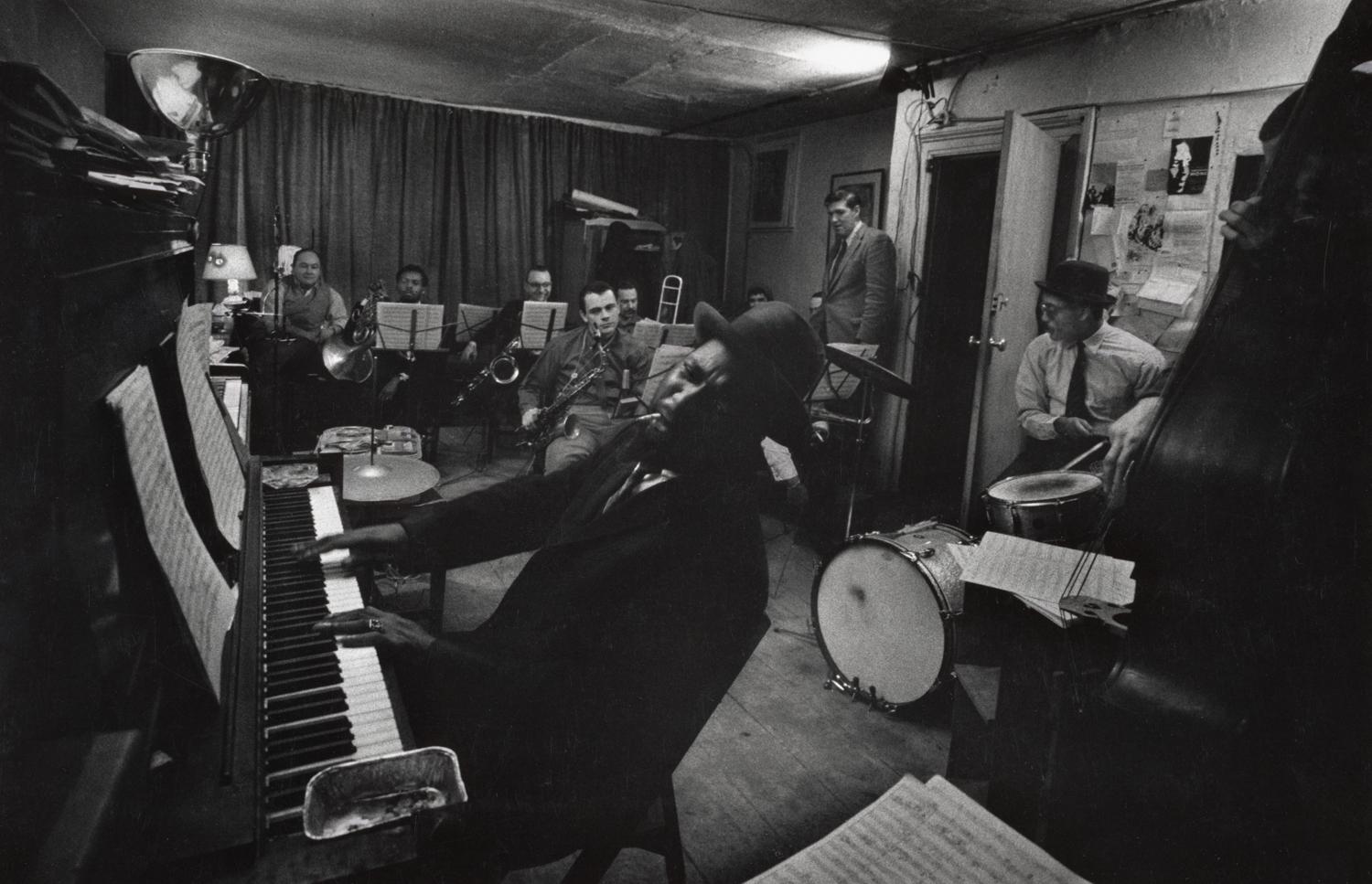by Imogen Williams
The Thelonious Monk Orchestra at Town Hall is a seminal large ensemble recording, released in 1959. Under the direction of Tony Kofi, NYJO celebrates this powerful work with a stellar dectet of emerging UK talent.
When Monk recorded “The Thelonious Monk Orchestra at Town Hall” in 1959, his career was at a peak, no longer a rebellious outsider, but finally recognised as a leading architect of modern jazz. So, what was it that made this one concert stuff of jazz lore?
It was a February night in 1959 when Thelonious Monk took a ten-piece orchestra to Town Hall in New York City. No one had ever heard Monk’s music in a big band setting before and the anticipation was huge.
Monk was 41 by now, and had already asserted himself as a living legend, but this was quite a departure for Monk, as with bebop, audiences were used to quartets and quintets. Monk enlisted the help of arranger Hall Overton, and for several weeks leading up to the night, the two men met every day in Overton’s 6th Avenue loft, sitting at two upright pianos, figuring out the orchestrations for a ten-piece band.
Tapes of the rehearsals, recorded by Overton’s neighbour W. Eugene Smith, reveal Overton and Monk spending long sessions on the arrangements, eventually picking ten pieces to transcribe for the ten players. Robert Northern, the French horn player, said he overheard a mutual respect and admiration between the two men. “When something wasn’t quite working the way Monk wanted,” Northern says, “I mean, the love and concern that Overton had to get it right was just beautiful to watch.”
Once the charts had been agreed on, ten musicians including Eddie Bert, Donald Byrd and Pepper Adams went to work, often rehearsing after their own respective shows, sometimes not beginning until 3am. Northern went on to say “It was magical; the aura was just magical. We couldn’t wait to get to rehearsal. Nobody was sleepy, nobody was tired. We greeted each other as just loving brothers and ‘Let’s get to work.’”
As it came to performance night “Everybody was curious,” Northern says. “Nobody could imagine what this was gonna sound like.” And sure enough, many musicians from far and wide came to this concert to see for themselves – safe to say no one was disappointed. “We get to Town Hall to play the concert, and it was magic time,” says Phil Woods, who played alto saxophone in the group. “All of a sudden, everything was clear. That band played so well that night. We played the heck out of that music, you know.”
It has been said that Monk and Overton were initially viewed by contemporaries as an odd pairing – a jazz renegade and a conservatory arranger. But Monk’s faith in collaboration, brought about a truly legendary performance and seminal album, one that thrust bebop into the limelight. One test of just how brilliant the composition is how well it stands up to reinterpretation. This music truly does, having be revisited by modern-day jazz legends such as Jason Moran and now the exceptional Tony Kofi.
This performance and album are a true testament to collaboration, perseverance, musicianship, and the power of companionship within ensemble, which makes it the perfect work to be celebrated by our very own NYJO ensemble. These qualities combined with masterful composition, allows this album to still hold a huge amount of significance within music 60 years on. Monk at Town Hall deserves to be studied and celebrated for an exceptionally long time.
